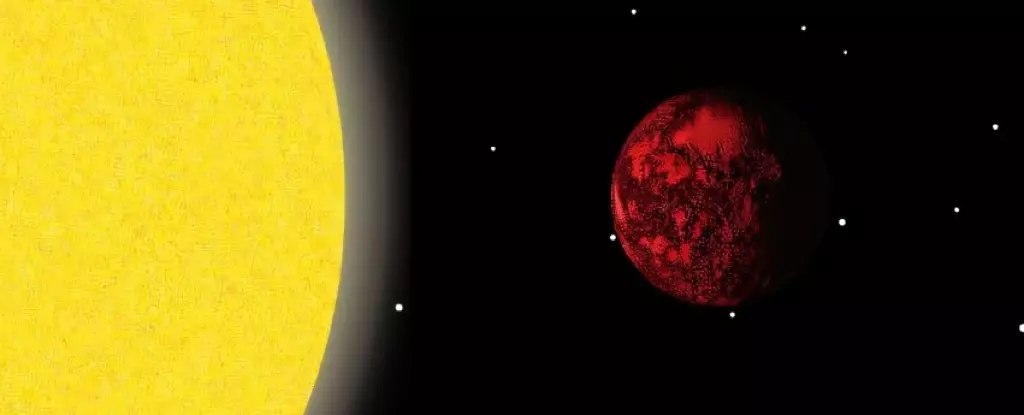In the realm of exoplanets, the recent discovery of K2-360 b stands as a testament to the wonders and oddities of our universe. This newly identified Super-Earth is notable not just for its size but for its extraordinary density. Comprising 7.7 times the mass of Earth but with a radius that is only 1.6 times that of our planet, K2-360 b boasts a density that rival leads—approximately 11 grams per cubic centimeter. This remarkable finding has left astronomers both intrigued and perplexed, offering insight into planetary formation and the dynamic nature of celestial bodies.
Super-Earths are classified as planets that have a mass larger than Earth’s yet smaller than that of the gas giants like Neptune and Jupiter. K2-360 b is categorized as an ultra-short-period (USP) Super-Earth due to its exceptionally swift orbit of just 21 hours around its host star. This rapid orbital period raises questions not only about the planet’s density but also about its evolution and the processes that shaped it. The sheer proximity of K2-360 b to its star contributes not only to the intensity of its gravitational field but also to the hot environment that likely resulted in atmospheric erosion.
The Mystery of Its Density
The density of K2-360 b is a hot topic among astronomers because it pushes the boundaries of what we understand about rocky planets. To illustrate the significance of its density, consider that Earth’s density is about 5.5 grams per cubic centimeter. K2-360 b, with its double-density measurement, suggests that its internal composition is predominantly heavy elements, primarily iron. This is evidenced by a model proposed by researchers, which indicates that its core makes up about 48% of its mass.
Given these properties, K2-360 b might represent remnants of what could have been a larger gas giant that was stripped of its atmosphere after venturing perilously close to its star. The heat and radiation from the star may have contributed to the loss of atmospheric gases, leaving behind a dense, terrestrial core that now comprises the planet.
Another captivating aspect of K2-360 b’s discovery is its relationship with its host star and a more massive companion planet designated K2-360 c. This larger planet is thought to have characteristics akin to Neptune. The interaction between K2-360 c and K2-360 b provides fascinating evidence of the gravitational dance that governs planetary systems. The concept of high-eccentricity migration suggests that the gravitational forces exerted by K2-360 c could have caused K2-360 b to transition into its current tight and hot orbit. The dynamical models constructed by researchers indicate that this migration involved processes that initially created an elliptical orbit before tidal forces ultimately stabilized it into its present form.
The discovery of K2-360 b, among other unique planetary bodies, serves as a powerful reminder of the diversity of exoplanets in our galaxy. It showcases how planetary systems may evolve over time and challenges researchers to rethink established models of planetary formation. The vast differences in density, structure, and orbit among discovered exoplanets suggest that our universe is replete with exotic worlds that defy traditional categorizations.
Therefore, K2-360 b not only stands out for being one of the densest exoplanets but also for the information it provides about planetary development and migration. With new technologies and observational techniques continuously emerging, astronomers are poised to uncover even more peculiar planets, leading us to new understandings about the nature of our universe. The search for exoplanets remains a rich field of inquiry, one that will likely continue to yield surprises and fuel the imagination of scientists and science-fiction enthusiasts alike. The chaos, beauty, and complexity of celestial phenomena challenge our understanding and keep us striving for more knowledge beyond our small corner of the cosmos.


Leave a Reply